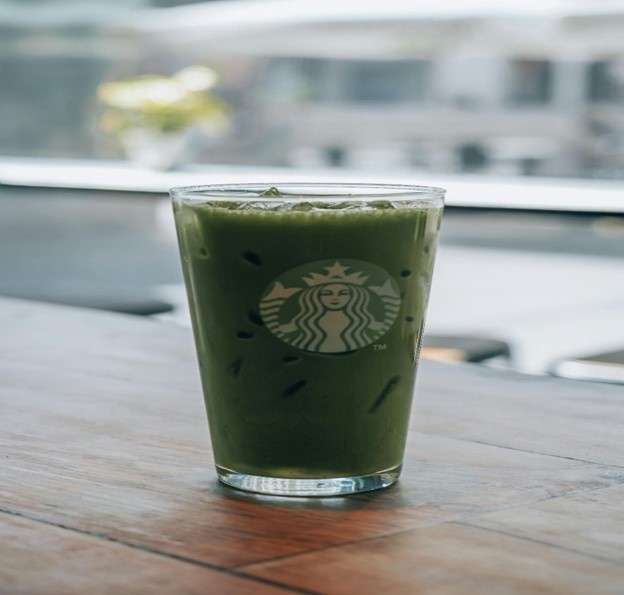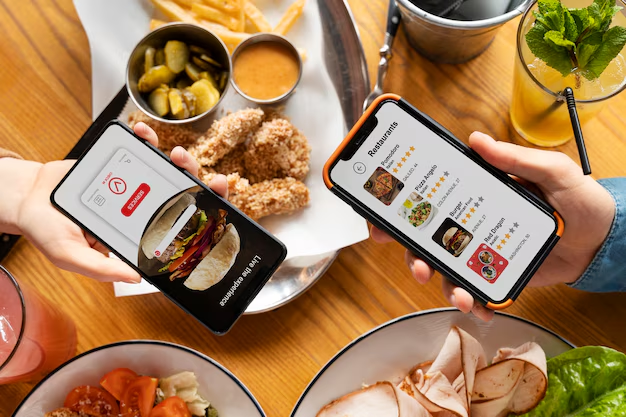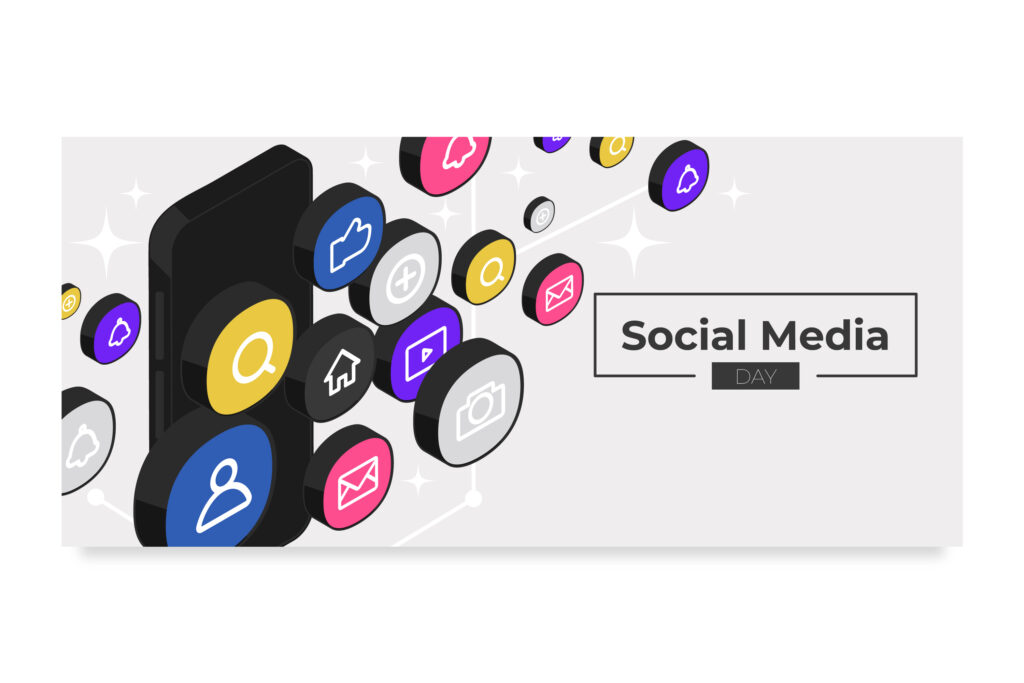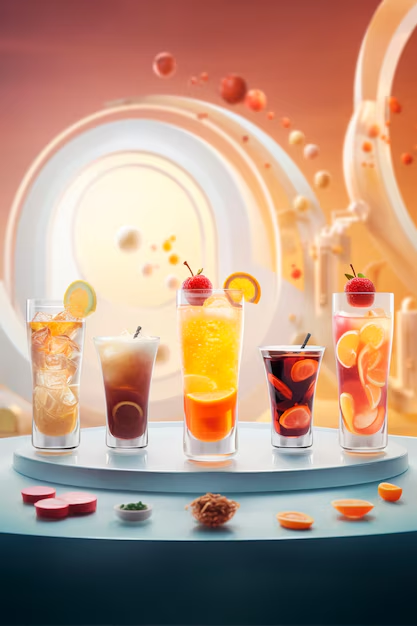Key Takeaways
- Did you know that new restaurants and cloud kitchens pop up every day?
- This means your social media marketing for restaurants needs to be top notch, creative, engaging, and immersive!
- You must be wondering how to promote a restaurant on social media?
- Read out 8 ideas that can boost social media marketing for restaurant.
In the food-and-drink world, restaurants must stand out.
That can be achieved through social media.
However,
- how do brands make use of social media to get their audiences engaged, increase their sales volumes, and raise awareness of their brands?
- how to promote restaurant on social media?
It is all about creating innovative and effective social media campaigns.
Eight exciting ideas for social media marketing for restaurants will be explored in this article. These unique ideas are also applicable on several social media platforms.
These insights would be helpful to anyone involved in managing a company’s online presence, whether they are working as a digital marketer or owning a small food business.
Engage with Social Commerce for monetizing social media marketing for restaurants
Social commerce has revolutionized shopping experiences for customers.
It is basically about selling products directly through different social media platforms.
Brands such as Starbucks have perfected this skill. By using the Instagram shopping feature, they enable customers to purchase items without leaving the app.
Apart from making life easy for shoppers, it also significantly increases sales volumes.

Father’s Day Campaigns: Celebrating with Flavor
During Father’s Day, food companies can connect with their audience more effectively than ever before.
Special offers could be made by these companies to create specially themed menus or even give you recipe ideas on what to cook your dad for lunch during the Father’s Day celebration.
Budweiser, for example, ran a campaign on Father’s Day that had them ask users to submit “Bud & Burgers” recipes.
The campaign was successful because it increased engagement and drove sales.
Keep in mind that you want a campaign that will resonate with your audience while at the same time maintaining its relevance to your brand.

Small Business, Big Impact: Budget-Friendly social media marketing for restaurants
Social media campaigns from small retailers in the F&B field can go a long way too.
When there is creativity and proper strategic thinking involved, even under budget conditions, a lot of mileage can be achieved.
For example, if there was a promotion running at the local bakery, they would feature the best-selling pastries their clients love.
Then they could request followers to take pictures of their purchases for sharing by encouraging user-generated content, which boosts engagement and visibility.
Note that you don’t just want to sell products; you also need to create an attachment between users and your brand.
This approach eventually leads to increased customer loyalty & word-of-mouth promotions, both of which are crucial for small businesses.
Influencer Marketing: The Recipe for Reach via social media marketing for restaurants
Influencer marketing holds great potential for food and drink firms.
By collaborating with influencers, brands can leverage their established audience as well as enhance credibility via endorsements.
Take into account a craft beer brand teaming up with a well-known beer blogger to do an exclusive review or give away something special.
When this happens, it does not only expose them to more potential customers but also produces worthwhile content that will aid in drawing the target influencer’s client base towards the brand name too.
Nonetheless, it is essential that, when selecting influencers, you choose those whose values mirror your own company’s ethics and are relatable to your targeted audience, as this will ensure creativity and innovation, which may increase the success rates of such campaigns.
User-Generated Content: Authenticity on the Menu
User-generated content (UGC) is like social media gold. It’s real; people can relate to each other through it, making it interesting enough!
For food and beverage brands, this could mean that the client encourages customers to share their meal or drink photos with a certain hashtag.
This does not only ensure consistent content for these brands but also fosters a feeling of belonging among consumers.
Also, UGC is a superior form of social proof.
It can be more influential than any scripted brand message because people see others genuinely enjoying your goods.
Nevertheless, always make sure you ask for permission before sharing any user-generated content, and don’t forget to give credit to its creator. It is crucial, as it shows respect for customers and encourages more UGC in the future.
Behind-the-Scenes: Humanizing Your Brand via social media marketing for restaurants
Behind-the-scenes content is an effective way of making your brand seem less corporate.
It provides an insight into the individuals and processes responsible for creating your products.
In the case of food and beverage brands, this might involve sharing pictures from the kitchen or videos of staff members introducing themselves or following one item from farm to table.
This kind of stuff is designed to build trust in addition to developing a deeper connection with your fans.
What it simply says is that there are real people behind those logos who love what they do.
Remember, just be real! Share with your audience how you’ve dealt with successes as well as failures within your food & drink venture without shying away from such information since it’s what makes you authentic in their eyes, which will gain their trust and loyalty as well.
Contests and Giveaways: Stirring Up Engagement
Contest giveaways have been used time after time in order to generate Facebook engagement on social media networks. Such promotions can help drive up traffic to your site’s posts, boost post involvement levels, and drive up followership numbers as well.
In the case of food and beverage brands, you can host such a contest as a food recipe competition, give out free meals, or also involve other brands in the competition.
Ensure that the rules are clear and that the prize is something your audience would be interested in.
Remember to cross-promote your sweepstake or giveaway on all your social media platforms. Moreover, if you want more people to hear about it, consider promoting it through ads.
And when the contests end, don’t forget to name the winner and thank everybody who participated. In such a way, you will keep up enthusiasm for your next giveaway or contest.

Storytelling: Crafting a Compelling Brand Narrative
Social media marketing heavily relies on storytelling by marketers. It enables companies to get closer to their consumers beyond selling commodities or services.
However, this could mean story-telling behind recipes, ingredients journeying from farm to table, and inspiration behind their brand for food and beverage manufacturers.
This could take the form of blog posts, videos, photo captions, or even a series of social media posts.
Remember that storytelling is not just about describing your brand but also making others part of this whole process as well.
Emotional bonds fostered between the company’s brand and its customers tend to make them very loyal, thus building long-term relationships with them.
Last but not least, ensure that every element of your social media campaign speaks about your brand’s story, starting from photos posted with well-thought-out captions along with comments’ hashtags done by users.
This will enable you to have an all rounded narrative concerning this user group that many can relate to, hence compelling them to associate themselves with what is being said as it appeals to their emotions.
Conclusion: Assessing Success and Future Plans
In the dynamic era of social media, success is not just about coming up with appealing content. It also involves efforts to measure the impact of your campaigns and incorporate these lessons into improvement.
A good starting point would be having well outlined objectives for your social media campaigns.
Are you seeking to boost brand recognition, increase sales, or promote community participation?
When you have set your goals, it will be possible to identify relevant parameters that will help in measuring their realization.
Also, do not underestimate the importance of making use of the analysis tools furnished by social media platforms.
These tools may reveal crucial information about the preferences, behaviour, and engagement level of your target audience base with regards to what they are viewing.
This knowledge will enable you to optimize for future campaigns based on data driven decision-making.
Lastly, remember that restaurant social media marketing is a continuous learning process that requires adaptation.
Keep yourself informed regarding emerging trends, listen to your customers’ feedback, and don’t shy away from trying out new things.
The ability to innovate and adjust is pivotal in determining whether any given campaign will be successful on social platforms.
Wildnet Technologies has been a leader in catering social media marketing services among its 360 degree digital marketing services over a decade to more than 2100+ clients. Our social media experts helped these clients to garner 150%+ social media engagement and more than USD 10 million in revenue.
FAQs
FAQ 1. How to promote food on social media?
Ans: Take good pictures, make food review videos, show the behind-the-scenes journey of a dish, and more, as this will echo in the hearts of your followers and non-followers.
This way, you can easily promote food content on social media. Remember never to share your recipe’s USPS!
FAQ 2. Which social media is best for food business?
Ans: If you wish to reach out to all ages, then use Facebook; for middle-aged people and youth, use Instagram; for younger people, use Snapchat and TikTok; and for really young audiences, use TikTok!
To engage females, use Snapchat, and accordingly, you can promote your food business on social media.
FAQ 3. What food brands do social media well?
Ans: There are a few food brands that have cracked social media wide open, and they are:
– Burger King
– Arby’s
– Dunkin’ Donuts
– Oreo
– McDonald’s
FAQ 4. How to promote a food brand?
Ans: First, build your brand value by showcasing your USPs in areas where you can deliver them so that you efficiently engage your target audience.
Then run paid ads on social media and food delivery platforms to bring your brand to the forefront, allowing users to opt for you.
Share the client reviews and testimonials on social media to build up your credibility and promote UGC, or user-generated content sharing.
Then keep repeating it consistently while modifying your digital marketing strategy based on the analysis of the previous performance data.
FAQ 5. How to make food look appealing on social media?
Ans: Hire professional photographers and setup a photo studio to click top quality photos, images, video podcasts, and more about your brand’s food!
Then share them with a theme and captivating captions, allowing people to engage with them and share them organically on social media.







